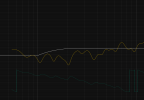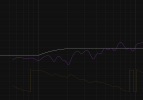I may have accidentally stumbled upon a method to get a true balanced connection from a single unbalanced connection using the minidsp flex. I have a sub pre-out that has a low line voltage of 0.7v, making it hard to find an amp that I can use for a high powered sub without increasing the gain on my minidsp to get the voltage higher, or using an amp with an extremely high gain. This of course has a negative impact on sound quality. I then realized that you can inverse outputs on the minidsp.
Basically, I took my single unbalanced input from my sub pre-out, and output that to two outputs on the minidsp, with one output being inverted. I then made a dual RCA to single XLR cable that had the non-inverted RCA signal on XLR pin 2, the inverted RCA signal on pin 3, and both RCA grounds on pin 1. Not only does it work, but there is absolutely no noise now when I put my ear right up against my sub, and I got a full 6db increase in output. Basically I doubled my line-out voltage from 0.7v to 1.4v while also getting a cleaner signal. I also noticed that I no longer have the weird phase shifts I was getting with the unbalanced connection.
The first measurement is RCA pre-out -> RCA minidsp input -> RCA minidsp output -> RCA in on amp. With this configuration I was boosting the output by 6db on the minidsp. The second measurement is RCA pre-out -> RCA minidsp input -> Two RCA minidsp outputs with one inverted -> XLR in on amp from my custom cable. With this configuration I have the gain set back to 0db.
You can buy RCA to XLR converters, but I can guarantee you those wont output as clean of a signal as the minidsp. A few things to note:
If you have EQ settigns (as I do here), they need to be exact on both outputs.
I found that you have to use outputs 1/3 or 2/4. It wont work if you use outputs 1/2 and 2/3.
With this method you will have to make your own cable. Do not use a pre-made dual RCA to single XLR cable. Those cables have the hot signals of the RCA tied into the same pin 2 on XLR. You need one RCA on the hot pin, and one RCA on the cold (inverted) pin.
EDIT: Should also note in the graphs, the measurement begins at 5hz. This is an 18in sealed subwoofer, with the LPF set to 80hz.
Basically, I took my single unbalanced input from my sub pre-out, and output that to two outputs on the minidsp, with one output being inverted. I then made a dual RCA to single XLR cable that had the non-inverted RCA signal on XLR pin 2, the inverted RCA signal on pin 3, and both RCA grounds on pin 1. Not only does it work, but there is absolutely no noise now when I put my ear right up against my sub, and I got a full 6db increase in output. Basically I doubled my line-out voltage from 0.7v to 1.4v while also getting a cleaner signal. I also noticed that I no longer have the weird phase shifts I was getting with the unbalanced connection.
The first measurement is RCA pre-out -> RCA minidsp input -> RCA minidsp output -> RCA in on amp. With this configuration I was boosting the output by 6db on the minidsp. The second measurement is RCA pre-out -> RCA minidsp input -> Two RCA minidsp outputs with one inverted -> XLR in on amp from my custom cable. With this configuration I have the gain set back to 0db.
You can buy RCA to XLR converters, but I can guarantee you those wont output as clean of a signal as the minidsp. A few things to note:
If you have EQ settigns (as I do here), they need to be exact on both outputs.
I found that you have to use outputs 1/3 or 2/4. It wont work if you use outputs 1/2 and 2/3.
With this method you will have to make your own cable. Do not use a pre-made dual RCA to single XLR cable. Those cables have the hot signals of the RCA tied into the same pin 2 on XLR. You need one RCA on the hot pin, and one RCA on the cold (inverted) pin.
EDIT: Should also note in the graphs, the measurement begins at 5hz. This is an 18in sealed subwoofer, with the LPF set to 80hz.
Attachments
Last edited:


